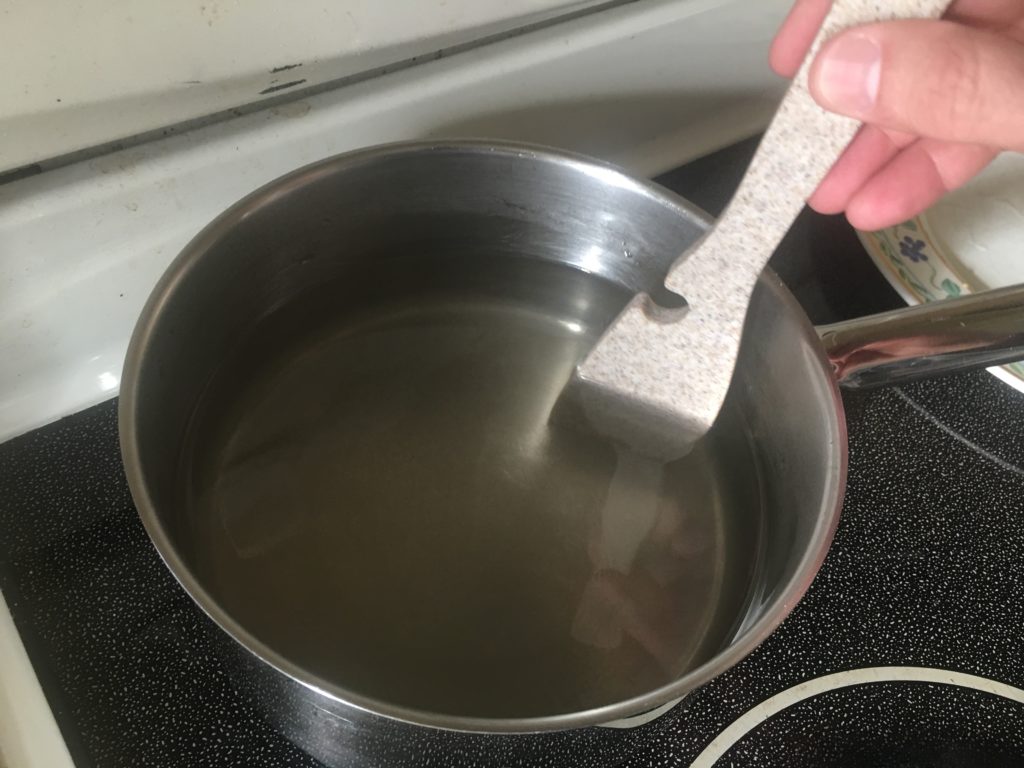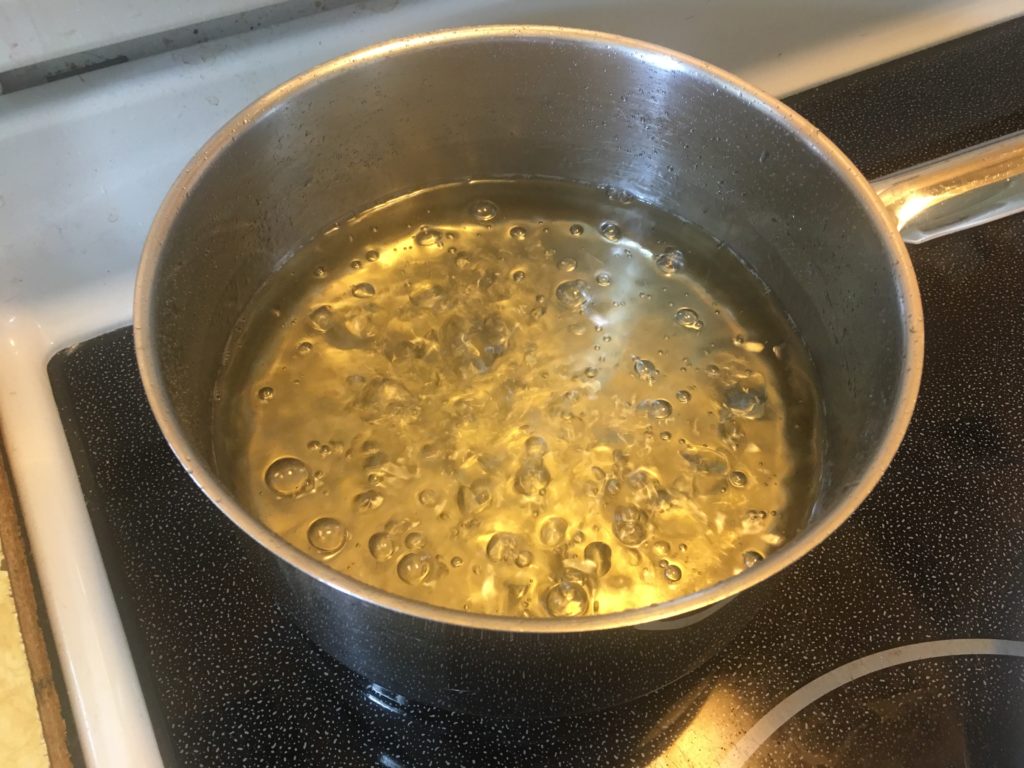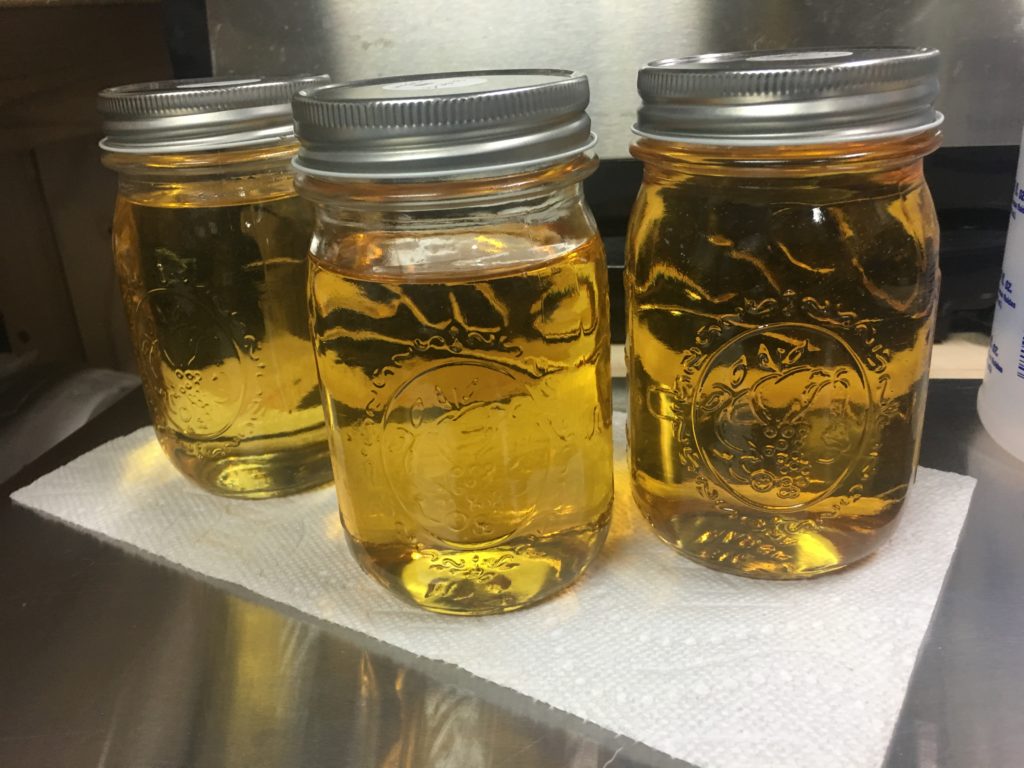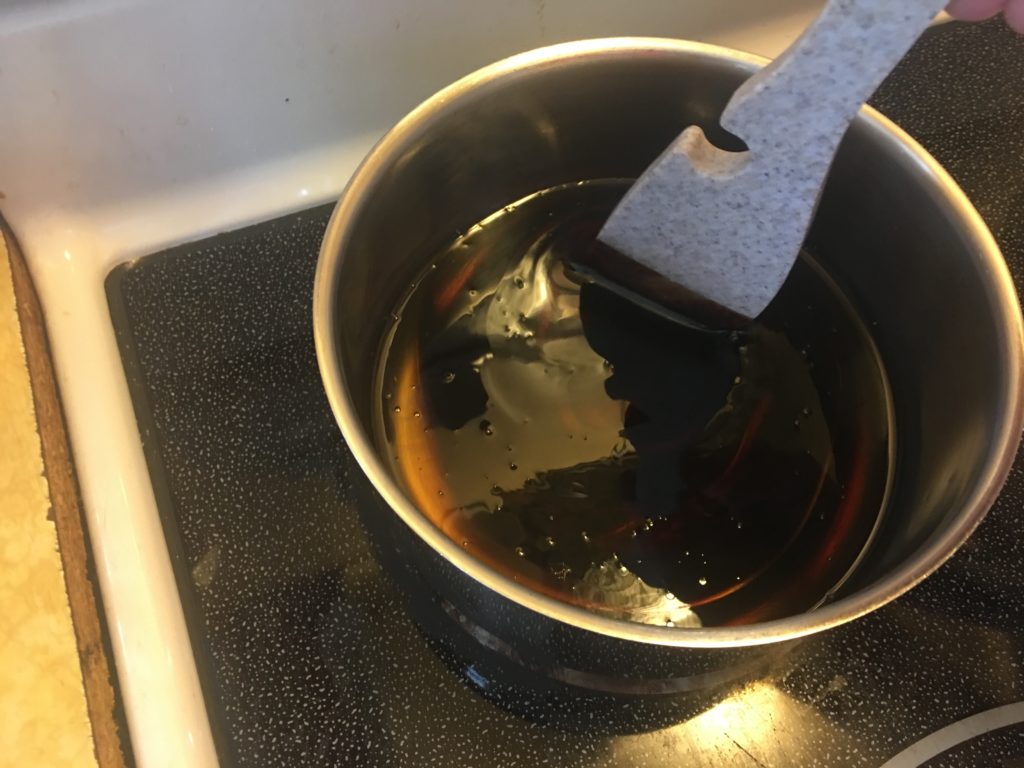 I have been reading some recipes that require invert sugar, so I started exploring where to get some. It seems hard to come by. While Googling, I found many links to making invert sugar. After perusing several sites, I picked a couple that made sense.
I have been reading some recipes that require invert sugar, so I started exploring where to get some. It seems hard to come by. While Googling, I found many links to making invert sugar. After perusing several sites, I picked a couple that made sense.
This blog post at Unholymess.com has some good info on making the various inverts and also discusses the dilution method – achieving invert sugars by mixing a white invert sugar with molasses.
Also, this post at wikiHow.com was very helpful as it gave me information on using citric acid versus lactic acid.
This website has a chart showing the various sugars used in British beers along with colors.
I added 1 lb. of cane sugar, 1.5 cups of distilled water, and 1/4 tsp of citric acid to a sauce pan and mixed well. I heated the mixture on one of the small eyes of my stove on medium high, 7 on my stove. I mixed while heating. Eventually the solution cleared up nicely and as it came to a boil I cut the heat back to about 5 (medium heat) and checked the temperature frequently. This took about 10 minutes.
Once the temperature got to 240°F, I set my timer for 20 minutes and monitored the temperature frequently. I had to cut the heat back to “Low” a few times and then bump it up a bit at times, making sure to keep the solution below 250°F.
After the 20 minutes, the solution had taken on a light golden color. Quite pretty actually. I removed from the heat and covered the pot and let cool for a couple of hours. I poured the syrupy invert into a pint Ball jar. The yield was right at about 14 ounces so there was about 3/4″ headspace in the jar.
I plan to mix some with molasses to achieve some darker inverts and hope to brew a beer with it soon!
PART TWO:
The very next day, March 28, 2018, I decided to make even more of the invert sugar. I made double the recipe from yesterday: 2 lbs sugar, 3 cups distilled water, 1/2 tsp citric acid. The mixture is white in color due to so much sugar and relatively little water.

I mixed the ingredients well before heating, then heated it on the small stove element at “7”, which is medium-high, stirring almost constantly until it came to a boil. The mixture clears up as it is heated and becomes a solution.

Once boiling, I turned the heat down to “4”. It took about 30 minutes to get to 230°F. I think I should have left the heat at “7” until reaching 230°F as it took a long time. The sugar solutions starts turning its golden color after a few minutes of boiling.

Once the temperature reached 230°F, I monitored the temperature closely. It took 15-20 minutes to reach the target temperature of 240°F. The temperature tended to creep upwards of 246°F so I had to work the heat and monitor the temperature constantly for the required 20 minutes at 240-245°F. At times I turned the heat off completely when it was spiking and when it cool back to 240°F, I turned it on “2” or “1” to maintained around 243°F.
After 20 minutes (plus a couple) I turned the heat off and moved the pot off the heat element and let cool for about three hours. I divided the invert syrup into two Ball pint jars. One is full and one is at the 12 ounce mark. The yield is about 28 fluid ounces compared to yesterday’s half-recipe yield of about 13+ fluid ounces. Today’s invert is slightly darker gold compared to yesterday’s, perhaps due to the thicker mass.

PART THREE:
On Friday, March 30, 2018, I decided to go ahead and try to make some invert #3 and #4 using the “dilution method” mentioned on the Unholymess.com blog.
How to mix the white invert with molasses was not explained so I decided I would heat the mixture on the stove. I mixed the invert #3 first. I placed my pot on the digital scales and tared it. I added the amount of white invert syrup I made yesterday according to the chart on the website – 478 grams. Then I added 22 grams of blackstrap molasses and set the heat to “3” which is medium-low. I let it heat up while stirring constantly for about ten minutes. Once I was satisfied that the sugars were well mixed, I poured the solution into a pint Ball jar and sealed.

I repeated the procedure, this time for invert #4. After both inverts were in their Ball jars, I pulled a sample to examine. The #3 seems a bit light, while the #4 is dark, but dark enough? I can shine my iPhone light through the #3 and see a nice garnet color. With the #4, I cannot even see light coming through. Perhaps it is dark enough.

Can’t wait to try these in an upcoming brew session of perhaps a British stout.
NOTES:
1. Making Invert Sugars, Unholymess.com.
2. How To Invert Sugar, wikiHow.com.
3. Brewing Sugars, Probably Due To Network Congestion.
4. Let’s Brew, Ron Pattinson, 2017.
